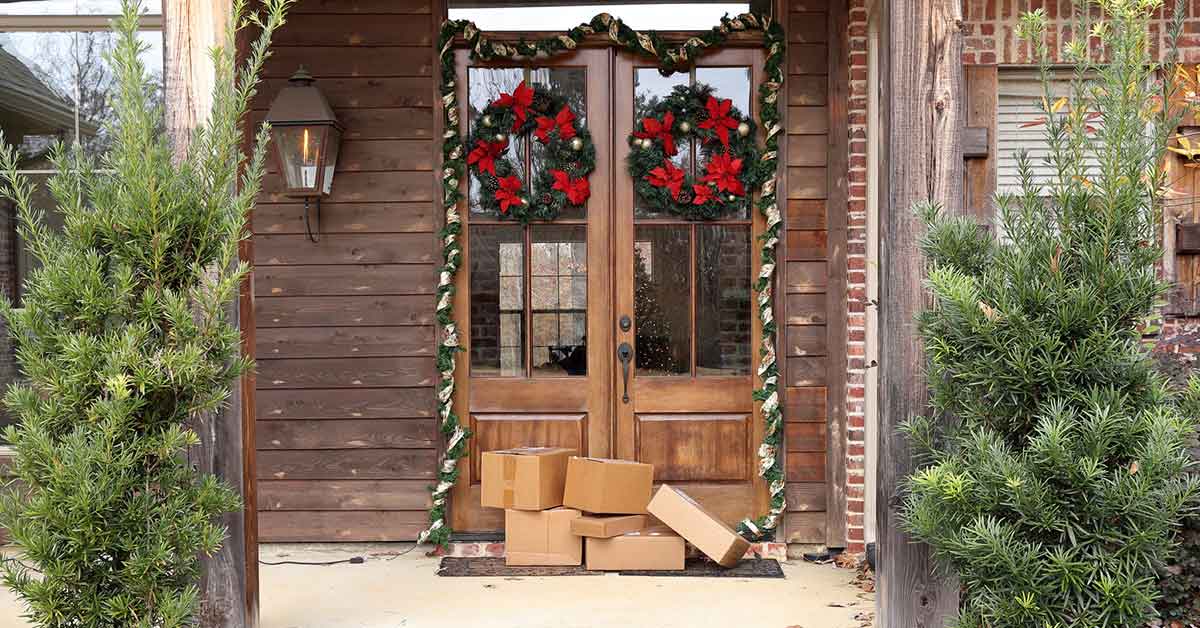With the holiday season quickly approaching, online shopping is appealing to more people as a safer and convenient alternative to going to stores. But with more deliveries to your front door, preying porch pirates are taking the opportunity to snatch boxes and ruin your holiday spirit. Thankfully, smart home devices allow you to keep a virtual eye on your packages right from your phone, no matter where you are. And you don’t have to stop there. There are other security measures available to keep your delivered goods safe from thieves. Some options won’t even cost you a dime. Take a look at these eight products, services, and tips to deter porch pirates and prevent package theft.
1. Install Security Cameras or a Video Doorbell
If you don’t have one already, installing security cameras or a video doorbell is an effective way to prevent sticky fingers from stealing your packages. Besides recording and playback capabilities, some cameras have motion detectors that alert you when there’s a movement in front of your door. Not to mention, most video doorbells have a two-way speaker built-in allowing you to hear and respond to what’s happening outside your door. Best of all, your video footage may help police apprehend criminals or alert your neighborhood of thieves.
Compare some of these security cameras and video doorbells below.
| Arlo Essential | Wyze Cam v2 | Nest Hello | Ring Peephole |
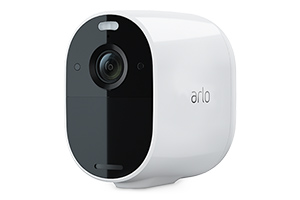 | 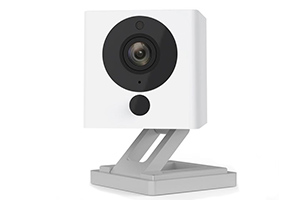 | 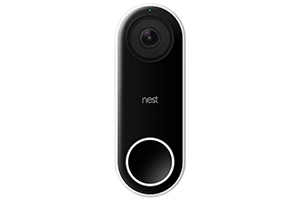 | 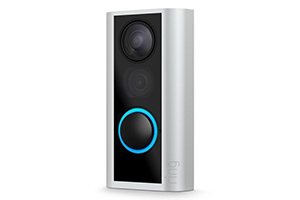 |
| $130 | $20 | $229 | $130 |
| Indoor Outdoor | Indoor | Video doorbell | Video doorbell |
| Wire-free | Wired | Wire-free* | Wire-free* |
| 2-way audio | 2-way audio | 2-way audio | 2-way audio |
*Google Nest Hello requires an existing doorbell wiring.
*Ring Peephole requires a peephole.
2. Upgrade Your Mailbox with a Package Lockbox
Another great way to protect your goods from theft is to upgrade your mailbox or purchase a separate package lockbox. There are many different types of lockboxes out there that use either a digital keypad, padlock, or scanner. But ultimately, it acts as a porch locker for a delivery person to place packages in and lock it. Should you decide to get one, remember to secure the lockbox by fastening it. Otherwise, someone might try to run off with it entirely.
3. Pick Up Your Package at an Amazon Hub Locker
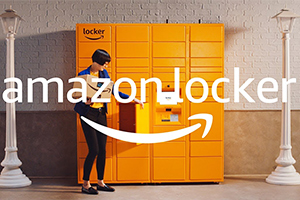
Do you love shopping on Amazon but scared that your apartment or home won’t be the best place to ship packages? Consider utilizing a Hub Locker from Amazon. This secure self-service kiosk allows you to pick up your packages at a location and time that’s convenient for you. Once your delivery is ready for pickup, you’ll receive an email containing a unique 6-digit code. Enter the code on the Locker’s touchscreen and a door automatically pops open containing your package. Best of all, there is no additional cost to use an Amazon Locker and free two-day shipping is eligible for Amazon Prime members, too. Discover an Amazon Locker near you.
4. Display Your Home Security Signs
Advertising your home security system or displaying warning signs may convince burglars to skip out on your house. After all, thieves are looking for a quick way to make money without getting caught. Stickers and yard signs from a home security provider are loud indications that your home is riskier to mess with, and that you take your property seriously when it comes to burglars and package thieves.
5. Require a Signature for Package Delivery

If you are able to be home for a delivery, carriers like FedEx, UPS, and DHL allow you to request a signature for deliveries. This requirement adds an extra layer of security and ensures the package is received directly by you instead of idling on your front door. It’s extremely helpful when you’re expecting an expensive item. Additionally, these carriers have the option to sign up for tracking alerts by email or text to help you stay up-to-date on shipping and delivery.
6. Deliver Packages to Your Workplace
A common reason why we aren’t home when a package is delivered is that we’re at work. So, why not have your goodies delivered directly to your workplace? Be sure to check with your boss and workplace policies to ensure you’re able to do so. You certainly don’t want to take advantage and fill up the breakroom with boxes or be a nuisance to the receptionist whose holding your packages for you. However, it may be acceptable to receive an important package at work every once in a while.
7. Provide Delivery Instructions

Many retailers allow you to indicate special delivery instructions during the checkout process. Before placing your order, you can input specific instructions to leave the package by a side door, in a fenced patio, or behind bushes. The purpose of this is to notify the delivery professional to hide the parcel where it’s less visible to anyone passing by.
8. Coordinate with Your Neighbors
Have a friendly neighbor? Your neighbors are a great resource to help prevent your packages from disappearing. By coordinating with them and creating a buddy system whenever someone is away, the other can keep an eye out for deliveries and temporarily take them in until they return. This way, nothing is left unattended and you can pick it up at your convenience. Plus, it’s a great way of keeping a good relationship with your neighbors.
Do You Live in an Apartment?
Sometimes receiving packages gets complicated when you live in an apartment. It can also be harder to keep your belongings safe. That’s why it’s a good reason to carry Renters Insurance. In fact, we can give you 10 reasons why Renters Insurance is so important here. Additionally, did you know that a Renters Insurance policy may only cost you a few bucks a month? Start your free quote today at (888) 772-4247 or speak with an Insurance Specialist about what’s covered under your policy.
The information in this article is obtained from various sources and offered for educational purposes only. Furthermore, it should not replace the advice of a qualified professional. The definitions, terms, and coverage in a given policy may be different than those suggested here. No warranty or appropriateness for a specific purpose is expressed or implied.
